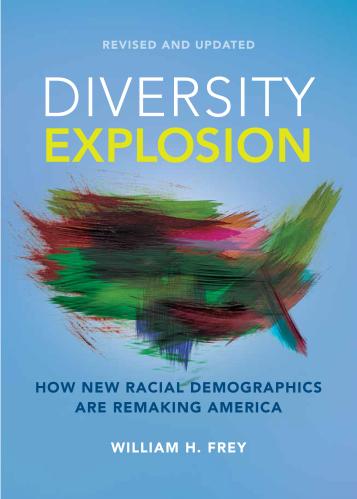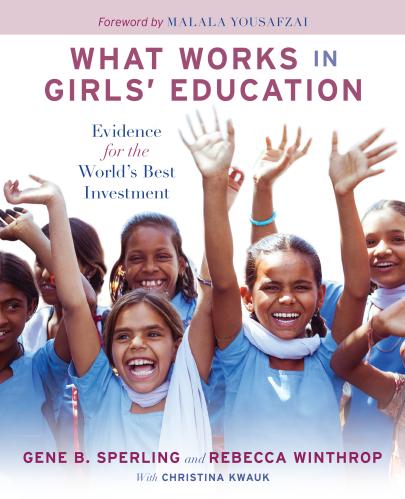The U.N. International Youth Day, which the world commemorates every year on August 12, is a day dedicated to recognizing the cultural and legal issues concerning young people.
This year’s International Youth Day is the perfect occasion to draw attention to the wide variety of Brookings research examining the characteristics of the millennial and younger generations, the challenges facing youth who find themselves marginalized from society, and the various ways policymakers can ensure today’s young people are prepared for a bright future.
The Millennial Generation
At 44 percent non-white, the millennial generation is the most diverse in American history

Numbering more than 75 million, millennials make up nearly a quarter of the total U.S. population and are America’s largest generation. Moreover, as the most diverse adult generation in American history, millennials serve as a demographic bridge between the largely white baby boomer generation and the very racially diverse “post-millennials.”
In his interactive research, Brookings demographer William Frey examines how millennials differ from previous generations on characteristics like educational attainment, homeownership, poverty, and marital status.
The diverse post-millennial generation is an opportunity for the Democratic Party
Examining an even younger American generation—post-millennials, or those born after the year 2000—Frey writes that the recent groundswell of student activism against gun violence in the aftermath of the Parkland shooting and congressional inaction could solidify already strong youth support for the Democratic Party.
Despite consistently low voter turnout, youth interest in politics is surging
Similarly, writes Brookings Governance Studies VP Darrell West, the youth-led gun control movement could have a sizable impact on voter turnout levels. After dropping to record low levels in 2010 and 2014, youth turnout doubled in the 2017 Virginia state elections. If that occurred on a national level, writes West, it could make a difference in close races—and would certainly put legislators on notice that young people are not happy with current policy decisions.
The future millennial consumer base will be in Asia
While American millennials may constitute the biggest demographic segment of the U.S. economy, their size pales in comparison to millennials across the world. Emerging and developing economies are home to 86 percent of the world’s millennials, with more than one billion in Asia alone. And, with millennials projected to surpass 15 trillion dollars in annual aggregate income by 2030, companies looking to harness this group’s spending power should begin to look abroad.
Marginalized Youth
Youth unemployment is a looming crisis for the world’s cities
The overall population in low-income countries is expected to double by 2050, resulting in an enormous global youth cohort residing in urban areas. Lex Rieffel explains how this could lead to outbreaks of violence by unemployed young people in large cities unless governments and the private sector can identify and scale up effective youth employment interventions.
Youth exclusion threatens to destabilize Jordan
In Jordan, more than 70 percent of the country’s 6.5 million people are under the age of 30. But despite their numbers, young Jordanians—especially women—have been kept on the sidelines of social, political, and economic life, causing many to grow apathetic and even radicalized. Beverly Milton-Edwards, in a paper for the Brookings Doha Center urges the Jordanian government to foster greater youth cohesion and inclusion in order to avoid the further erosion of Jordan’s stability.
40 percent of all young Americans are not in school and do not have a college degree

In the United States, a large portion of 18-24-year-olds have just a high school diploma or less and therefore face the risk of unemployment or unsteady, low-wage work. Martha Ross and Nicole Bateman discuss how this concerning trend varies at the local level and offer policy recommendations to improve workforce development for youth.
Chicago youth struggle to escape the cycle of gun violence
One child was killed every two weeks during the last school year in Chicago as a result of the city’s pervasive and tragic gun violence. Arne Duncan, former U.S. secretary of education during the Obama administration and a nonresident senior fellow with the Brown Center on Education Policy at Brookings, recently convened a discussion with four young Chicago residents on the gun violence that has overtaken their communities. The young men shared their personal stories on how they were able to overcome pressure to participate in the violence, finish school, and find jobs, and why they are now working to help other at-risk youth follow in their path.
Listen to the podcast featuring Duncan and two of the young men, and watch video highlights from the discussion.
Preparing the Next Generation
Africa’s exploding labor force will need stronger education systems
Africa will be home to a billion young people by 2050, but today, millions struggle to complete school and achieve basic literacy and numeracy skills. Therefore, in order for nations on the continent to capitalize on the coming explosion of their working-age populations, African education systems must rapidly accelerate progress through innovative approaches that will equip young people with the skills they need to succeed in the modern economy.
As Europe ages, it’s high time to invest in youth
Europe, too, is facing demographic changes that will require a much greater investment in youth. With life expectancy among Europeans projected to rise by 7 or 8 years by 2070, countries can mitigate the economic and financial burden of increased longevity if today’s young people are adequately supported with educational and economic opportunities required to “age in prosperity.”
Closing the global education gap will require “leapfrogging”
Though primary school access has grown tremendously in the last 200 years, now covering 90 percent of the world’s school-age children, it is estimated that it could take another 100 years for students in developing countries to reach the education levels of students in wealthier countries. Rebecca Winthrop, director of the Center for Universal Education at Brookings, explains how education systems can work to close this gap by “leapfrogging,” or dramatically speed up the pace of change in schools, so that all children can thrive. Winthrop also discussed this idea on an episode of the Brookings Cafeteria podcast.
Vishal Narayanaswamy contributed to this post.


Commentary
On International Youth Day, what to know about the challenges and opportunities facing today’s young people
August 9, 2018